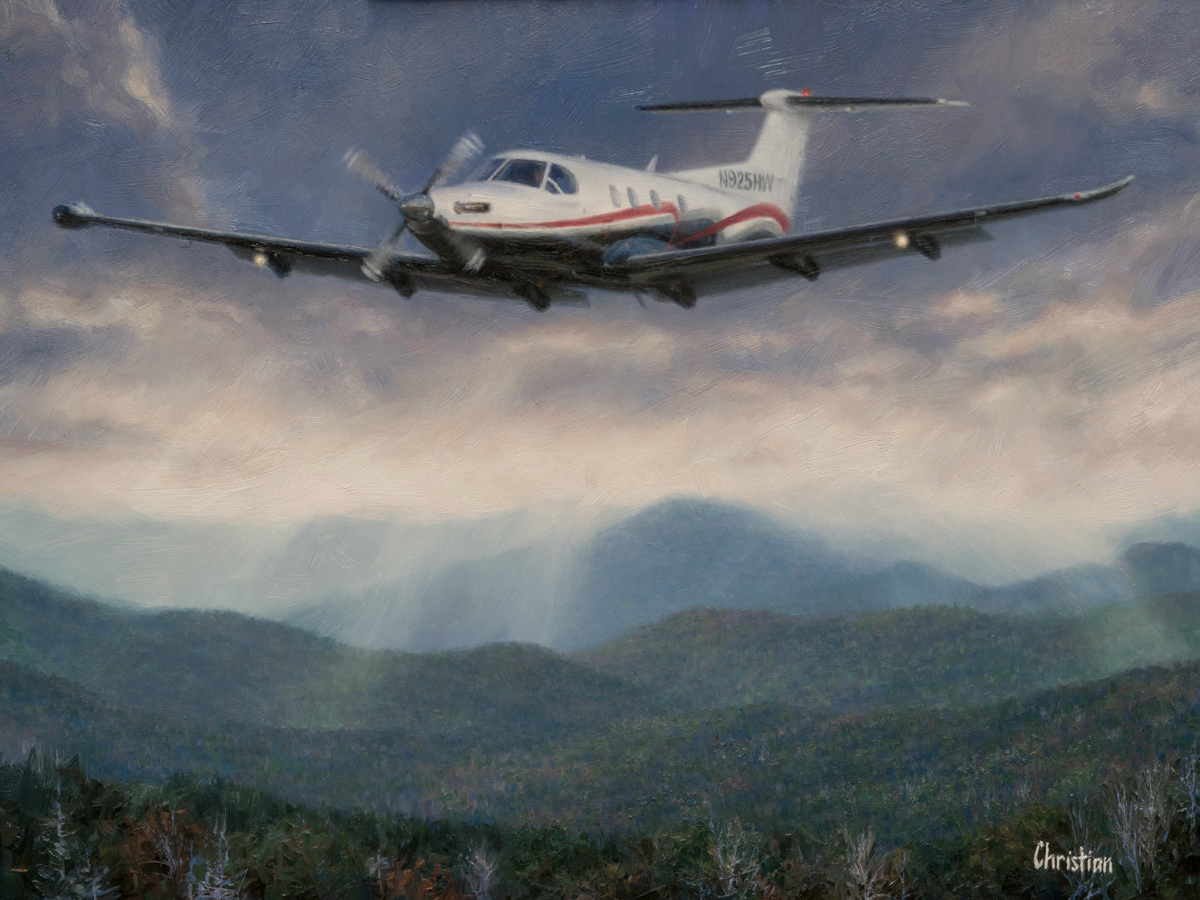Arvid’s Pilatus | 12×16 | Oil on Panel
Inspiration for Arvid’s Pilatus
A wonderful couple, regular collectors, commissioned Arvid’s Pilatus, a Pilatus PC-12, as a gift. The field of aeronautics represented a new genre to me as an oil painter, so I was excited!
Actually, the last time a plane starred in one of my pieces was back in grade school. Because I know you’re interested in the story, that painting was a watercolor of a C-130. My Dad flew in one while serving in the U.S. Air Force during the first Gulf War. The plane had a green-and-brown camo job, and lightning streaked through the background. The colors were too vibrant, the edges too hard, and I failed to preserve the white of the paper, which compelled me to use opaque white. It was a mess. 😉 Anyways, THIS aircraft is a sleek Pilatus, not a trundling old C-130! The owner regularly flies out of the Smoky Mountains in North Carolina, and the runway practically ends on a cliff’s edge—a spectacular sight!
Information about the Pilatus
Pilatus Aircraft of Switzerland manufactures the PC-12, which is a single-engine turboprop passenger and cargo aircraft. Corporate transport and regional airliner operators form the main market for the aircraft, and the PC-12 holds the distinction of being the best selling pressurized, single-engine, turbine-powered aircraft in the world!
A single Pratt & Whitney PT6A-67 engine, which has a reputation for considerable reliability, powers the standard PC-12. The PC-12 incorporates numerous safety measures, including a three-axis autopilot. The plane counteracts stall and spin conditions using dual angle-of-attack sensors near the wingtips. These sensors force the stick forwards in advance of a potential stall. The PC-12 NG utilizes a complete split-bus dual electrical system akin to modern jet aircraft. It also has two separate batteries and a third emergency battery. The wings and empennage have pneumatic de-icing systems installed, and the windshield houses integrated electrical de-icing measures. Exhaust heat is used for engine inlet de-icing.
The cabin interior of the PC-12 can comfortably accommodate up to nine passengers. Features include a refreshment center, a fully enclosed lavatory, and a baggage area to the rear of the cabin. BMW’s Designworks division collaborated on designing the interior, making extensive use of leather, fine wood veneers, and various textiles. A large cargo door accommodates more bulky items. The cockpit’s layout optimizes ergonomic and aesthetic appeal, providing similar comfort levels for the flight crew as to the passengers.


